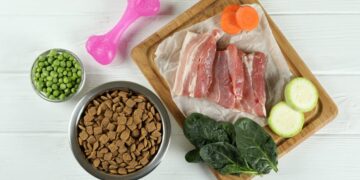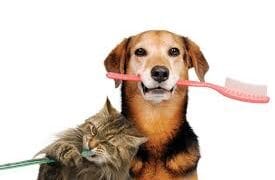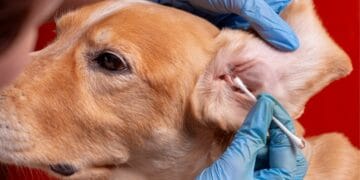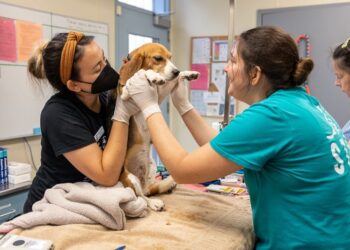Your beloved companion, whether a tail-wagging dog or a purring cat, relies entirely on you for their well-being, and nothing is more fundamental to a healthy, happy life than their diet.
The food you put in their bowl is the single most important health decision you make for them every single day.
This comprehensive guide will peel back the layers of pet nutrition, helping you understand the essential building blocks of a perfect diet, the stark differences between canine and feline needs, and how to navigate the overwhelming choices of commercial and homemade options.
We’ll cover everything from the must-have nutrients to the dangerous foods to avoid, ensuring you have all the knowledge to fuel your furry friend’s best life.
The Core Pillars of Pet Nutrition
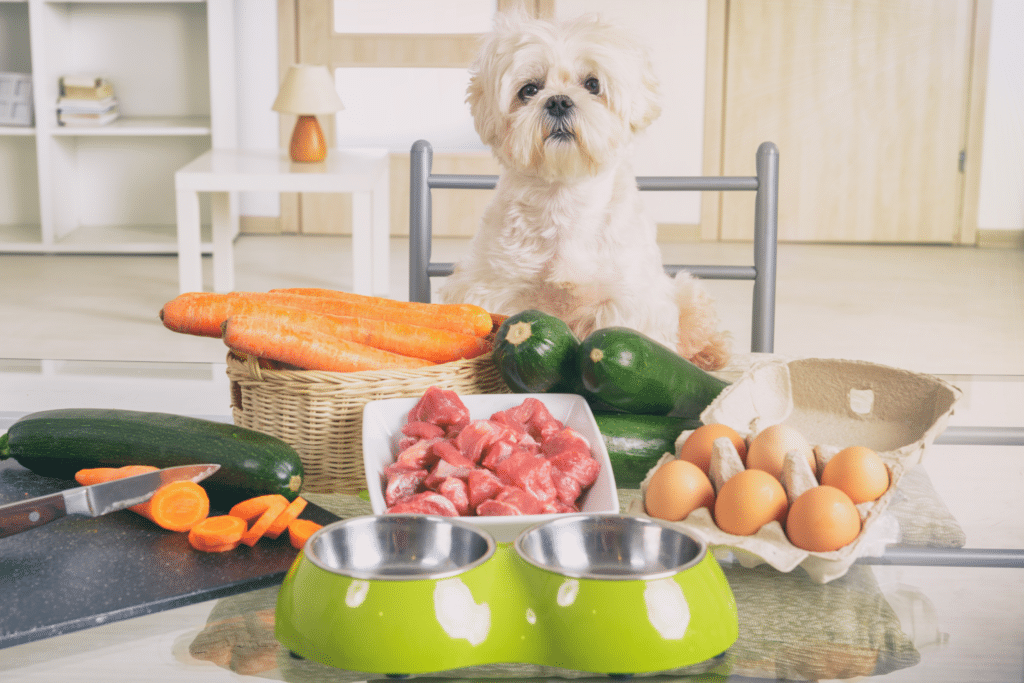
Every single meal you provide should deliver a specific balance of six major nutrient groups. Getting this balance right is what turns mere sustenance into optimal health. These nutrients are the building blocks, the fuel, and the repair crew for your pet’s entire body.
A. Protein: The Foundation
Protein, made up of amino acids, is arguably the most critical component. It is essential for muscle, skin, coat, and organ development and repair.
It is the primary energy source for cats and a vital one for dogs. High-quality sources include muscle meat, eggs, and organ meats.
B. Fats: The Energy Powerhouse
Fats, or lipids, are the most concentrated source of energy, delivering twice the calories of protein or carbohydrates.
They are crucial for a healthy coat and skin, regulating body temperature, and enabling the absorption of fat-soluble vitamins (A, D, E, and K). Essential fatty acids, like Omega-3 and Omega-6, are vital for brain function and reducing inflammation.
C. Carbohydrates: The Quick Fuel
Carbohydrates, including starches and fibers, provide ready energy and support intestinal health. While cats have a lower requirement, dogs, as omnivores, utilize carbohydrates effectively for energy. Fiber, a type of carbohydrate, is non-digestible but critical for promoting gut motility and healthy bowel movements.
D. Vitamins: The Regulators
Vitamins are organic compounds needed in tiny amounts but are essential for metabolic function, immune system support, and general bodily processes.
They are categorized as either fat-soluble (A, D, E, K) or water-soluble (B-complex and C). Fun fact: unlike humans, dogs and cats can synthesize their own Vitamin C, but must obtain others, like Vitamin A, from their diet.
E. Minerals: The Structural Support
Minerals are inorganic compounds that play roles in everything from bone strength (calcium and phosphorus) and oxygen transport (iron) to nerve and muscle function (potassium, sodium, and magnesium). Maintaining the correct ratios of minerals, especially calcium and phosphorus, is crucial for growing puppies and kittens.
F. Water: The Life Source
Often overlooked, water is the most essential nutrient of all. It makes up a large percentage of a pet’s body weight and is necessary for almost every chemical reaction, including digestion, temperature regulation, and waste removal. Always ensure your pet has constant access to fresh, clean water.
Not All Pets Are Created Equal: Canine vs. Feline Diets
A common mistake is assuming that a “generic” pet food will suffice for both a dog and a cat. The reality is that dogs and cats have fundamentally different biological needs based on their evolutionary history.
The Cat: The Ultimate Obligate Carnivore
Cats are obligate carnivores. This means their digestive system, metabolism, and nutrient requirements are specifically designed to process a diet almost entirely based on animal tissue.
They lack the necessary metabolic pathways to efficiently utilize plant-based nutrients.
The key feline requirements include:
- High Protein: Cats require a significantly higher percentage of protein compared to dogs to maintain muscle and use it as their primary energy source.
- Taurine: This is a crucial amino acid found almost exclusively in animal muscle meat. Cats cannot synthesize enough of it on their own and a deficiency can lead to severe health issues, including blindness and heart failure.
- Vitamin A & Arachidonic Acid: Unlike dogs, cats cannot convert beta-carotene (from plants) into active Vitamin A, nor can they efficiently produce Arachidonic Acid (an essential fatty acid) from plant oils. Both must be supplied pre-formed from animal sources.
The Dog: The Versatile Omnivore
Dogs, having evolved alongside humans, are omnivores. Their bodies are much more adaptable and can digest and utilize nutrients from a far wider variety of sources, including grains, vegetables, and fruits, in addition to meat.
The key canine characteristics include:
- Balanced Diet: Dogs thrive on a balanced mix of quality protein, fats, and carbohydrates.
- Starch Digestion: Their digestive systems are much better equipped than a cat’s to break down starches and carbohydrates for energy.
- Nutrient Synthesis: Dogs can synthesize necessary nutrients, like Taurine and Vitamin A, from precursors found in both plant and animal materials.
Navigating the Pet Food Aisle: Commercial vs. Homemade
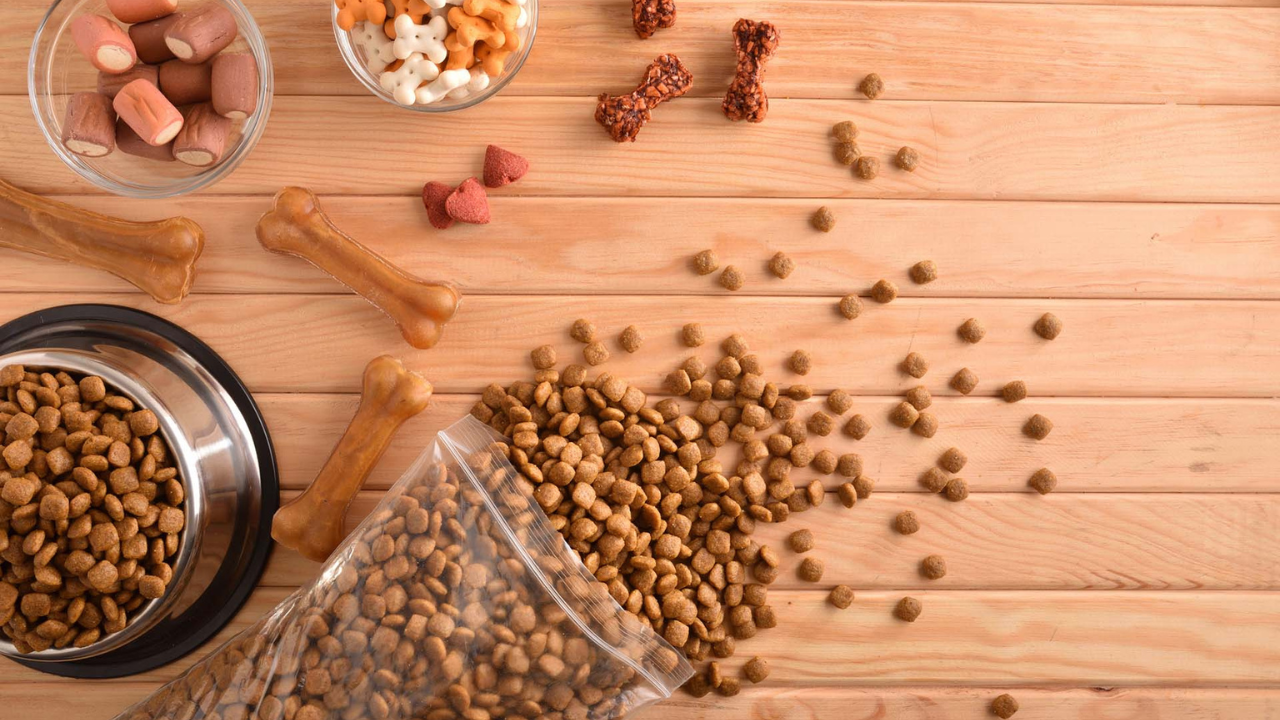
Choosing what goes into your pet’s bowl is tough. The market is saturated with options, from dry kibble to raw, and every owner eventually faces the decision: commercial or homemade?
I. Commercial Pet Food
Commercial foods are generally formulated to be “complete and balanced,” meaning they meet the minimum nutritional requirements set by regulatory bodies like the AAFCO (Association of American Feed Control Officials) in the US or FEDIAF in Europe.
A. Pros of Commercial Food
- Convenience: It’s easy to store, measure, and serve.
- Nutritional Completeness: Reputable brands employ veterinary nutritionists to ensure the food contains all essential vitamins and minerals in the correct ratios for a pet’s life stage (puppy/kitten, adult, senior).
- Cost-Effectiveness: Often more budget-friendly than formulating a human-grade homemade diet.
B. Cons of Commercial Food
- Additives: Some lower-quality foods may contain artificial colors, preservatives, or questionable “fillers.”
- Processing: Dry kibble involves high-heat processing, which can slightly reduce the potency of certain nutrients, requiring supplementation later.
- Less Hydration: Dry food has a very low moisture content (around 10%), which is a particular concern for cats, who naturally have a low thirst drive. Wet food (around 70-80% water) is much better for feline hydration.
II. Homemade Diets
This involves cooking or preparing your pet’s meals using fresh, whole ingredients from your kitchen.
A. Pros of Homemade Food
- Ingredient Control: You know exactly what’s going into the meal, which is ideal for pets with severe allergies or sensitivities.
- Freshness: The ingredients are typically fresher and less processed than commercial options.
- High Palatability: Most pets find home-cooked meals incredibly appealing.
B. Cons of Homemade Food
- Nutritional Imbalance (Major Risk): This is the biggest drawback. Studies consistently show that the vast majority of recipes found online are nutritionally deficient, often lacking crucial minerals like calcium. This can lead to serious, long-term health problems.
- Time and Effort: It’s extremely time-consuming for shopping, preparation, and storage.
- Cost: Sourcing human-grade, balanced ingredients can become significantly expensive.
- Safety Risk: Handling raw meat and bones carries a risk of bacterial contamination for both the pet and the human family.
Crucial Note: If you choose a homemade diet, it must be formulated and regularly reviewed by a board-certified Veterinary Nutritionist to ensure it is complete and balanced. Simply cooking chicken and rice is not a complete diet.
Debunking Common Pet Feeding Myths
The world of pet food is rife with misinformation, often spread by marketing rather than science. Let’s clear up some of the most common myths.
A. Myth: Raw Diets Are Always Better
Fact: While the “ancestral” appeal is strong, raw diets (BARF, Prey Model, etc.) are complex.
They carry a significant risk of bacterial contamination (like Salmonella and E. coli) that can affect both the pet and the people in the household.
More importantly, poorly formulated raw diets are frequently nutritionally unbalanced. Always discuss the risks and benefits with your vet before transitioning.
B. Myth: Grains Are Bad and Cause Allergies
Fact: This is one of the most persistent myths.
Grains like rice, oats, and barley are excellent sources of digestible carbohydrates, B vitamins, and fiber.
True grain allergies are rare; the most common pet allergens are protein sources (like beef or chicken).
Furthermore, some non-grain, “boutique” or “exotic” diets have been tentatively linked to cases of Dilated Cardiomyopathy (DCM) in dogs. Unless your vet diagnoses a grain allergy, there is no need to avoid them.
C. Myth: By-Products are Low-Quality “Fillers”
Fact: The term “by-product” is misleading. It refers to rendered parts of the animal other than the pure muscle meat, such as organ meats (liver, kidney), which are actually extremely nutrient-dense.
Your pet’s wild ancestors ate every part of their prey, not just the muscle. High-quality by-products are nutritionally valuable additions to pet food.
D. Myth: You Should Only Feed Bones for Dental Health
Fact: Cooked bones are extremely dangerous as they can splinter and cause choking or life-threatening internal perforation.
While raw, appropriately sized bones can offer some dental benefits, they also carry risks of broken teeth, internal injury, and bacterial contamination.
Safer alternatives like dental chews or daily brushing are preferred.
The Danger Zone: Foods That Are Poisonous
As a responsible pet owner, you must be aware of common human foods that are toxic to dogs and cats. Never assume human food is safe.
- Chocolate: Contains Theobromine, which is highly toxic and can cause tremors, seizures, and heart problems. Dark chocolate is the most dangerous.
- Grapes & Raisins: Can cause acute kidney failure in dogs, even in small amounts.
- Xylitol: An artificial sweetener found in sugar-free gum, peanut butter, and baked goods. It causes a rapid, life-threatening drop in blood sugar and liver failure in dogs.
- Onions, Garlic, & Chives: Contain compounds that can damage a pet’s red blood cells, leading to anemia.
- Avocado: Contains a toxin called Persin, which is mostly in the skin and pit, but consumption should be avoided.
- Alcohol & Caffeine: Highly toxic, even in small amounts.
- Macadamia Nuts: Can cause weakness, vomiting, and tremors in dogs.
- Yeast Dough: Can rise in the stomach, causing bloating and potentially life-threatening gastric torsion.
Tailoring the Diet to Life Stages and Health Needs
A pet’s nutritional needs are not static; they change dramatically throughout their life.
1. Puppies & Kittens (Growth Stage)
These animals are undergoing rapid growth and require:
- A. Higher calories and protein to support development.
- B. Specific calcium and phosphorus ratios to ensure proper bone and skeletal growth, especially critical for large-breed puppies.
- C. Increased levels of essential fatty acids for brain and vision development.
2. Adults (Maintenance Stage)
The focus shifts to maintenance. The diet should:
- A. Maintain ideal body weight and muscle mass.
- B. Be adjusted based on activity level (a couch potato needs less than a working dog).
- C. Promote healthy skin and coat.
3. Seniors (Aging Stage)
As pets age, their metabolism, activity, and organ function change. The diet often requires:
- A. Fewer calories to prevent obesity, as they become less active.
- B. Highly digestible protein to support aging muscle mass.
- C. Supplements like glucosamine and chondroitin (often added to senior formulas) to support joint health.
- D. Management of phosphorus, sodium, and protein levels for pets with kidney or heart issues, under veterinary guidance.
4. Therapeutic Diets
For pets with diagnosed health conditions (e.g., kidney disease, diabetes, food allergies, or urinary stones), a veterinarian will often recommend a therapeutic diet.
These are specialized, prescription-only foods formulated to manage the specific condition, such as restricted protein for kidney health or novel proteins for allergies.
Never try to treat a complex medical condition with an unproven diet you found online.
Conclusion
Providing optimal nutrition is the single most loving and impactful thing you can do for your furry family member. It’s an investment that pays lifelong dividends in vitality, longevity, and quality of life.
The journey begins with understanding the core six nutrients—Protein, Fat, Carbohydrates, Vitamins, Minerals, and Water—and then recognizing the profound biological differences between the obligate carnivore (the cat) and the adaptable omnivore (the dog).
Armed with this knowledge, you can confidently navigate the bewildering array of options, knowing that commercial food, when selected from a reputable manufacturer, offers the convenience of a guaranteed complete and balanced diet.
Conversely, if you choose the fresh route, you must commit to the complexity and expense of getting a recipe formulated by a professional veterinary nutritionist to avoid dangerous nutrient deficiencies.
Furthermore, we must always remain vigilant against the prevalent myths—like the unfounded fear of grains or the overstated benefits of unbalanced raw feeding—and strictly adhere to the list of toxic human foods, such as xylitol and grapes, which pose immediate threats to our pets’ health.
By tailoring the diet to the specific life stage, whether it’s the high-demand growth of a puppy, the maintenance of a healthy adult, or the supportive care required for a senior, you ensure their body receives exactly what it needs, when it needs it.
Ultimately, the best diet is one that your pet thrives on, maintains an ideal body weight, produces healthy stool, and keeps their coat gleaming—a diet that should always be chosen in consultation with your trusted veterinarian.
Your commitment to nutritional excellence is the foundation upon which your pet builds a lifetime of happy, healthy zoomies, cuddles, and purrs.
Choose wisely, choose knowledgeably, and enjoy the incredible bond that comes from knowing you’re giving them your very best.



